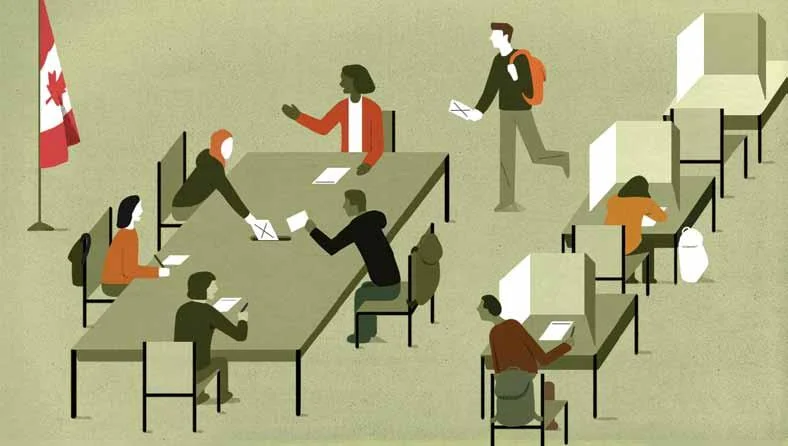Unveiling the Potential Drawbacks of Direct Democracy

Direct Democracy: Unveiling the Benefits and Drawbacks
Direct democracy, a form of governance where citizens directly participate in decision-making processes, stands in stark contrast to representative democracy, where elected officials make decisions on behalf of the populace. While direct democracy has been practiced in various forms throughout history, its potential benefits and drawbacks have ignited passionate debates among scholars, policymakers, and citizens alike. In this blog, we will delve into the advantages and disadvantages of direct democracy, shedding light on its potential to enhance civic engagement, promote transparency, and foster inclusive governance, while also examining its susceptibility to populism, inefficiency, and the risk of majority tyranny.
Benefits of Direct Democracy
Enhanced Civic Engagement: Direct democracy fosters a sense of empowerment and active citizenship among the populace. When individuals have the opportunity to participate directly in decision-making, they are more likely to engage with political issues, stay informed, and become active members of their communities. This heightened civic engagement can lead to a more politically educated and motivated populace.
Transparency and Accountability: Direct democracy promotes transparency as decisions are made openly, without the need for intermediaries. This transparency holds elected officials accountable for their actions, as their constituents can initiate referendums or recalls if they are dissatisfied with their performance. Such mechanisms help deter corruption and ensure that elected representatives remain responsive to the needs of the people.
Inclusivity and Diversity: Direct democracy can create a more inclusive political landscape. It provides an avenue for minority voices to be heard and for marginalized groups to advocate for their rights. By allowing citizens to propose and vote on policies, it can mitigate the influence of powerful interest groups and lobbyists, leading to a more equitable distribution of resources and decision-making power.
Rapid Response to Issues: In times of crisis or rapidly changing circumstances, direct democracy allows for quick decision-making. Citizens can come together to address urgent matters, bypassing bureaucratic delays and political gridlock. This agility can be especially beneficial during public health emergencies, natural disasters, or economic crises.
Drawbacks of Direct Democracy
Populism and Emotional Decision-Making: One of the most significant drawbacks of direct democracy is its susceptibility to populism. Emotional appeals and charismatic leaders can sway public opinion, leading to decisions that may not align with long-term interests or expert recommendations. This can result in policies that are popular in the short term but harmful in the long run.
Inefficiency and Overload: Direct democracy can be inefficient and time-consuming. When citizens are tasked with making numerous decisions, it can lead to voter fatigue and a lack of thorough consideration for complex issues. This may result in superficial decisions or a tendency to vote based on emotional reactions rather than careful deliberation.
Majority Tyranny: The principle of majority rule in direct democracy can sometimes lead to the tyranny of the majority. Minority rights may be ignored or sacrificed in favor of the preferences of the majority, potentially leading to discrimination or the suppression of minority voices. Safeguards must be in place to protect minority rights and ensure a fair balance of power.
Lack of Expertise: Citizens may not always have the necessary expertise to make informed decisions on complex technical or specialized matters, such as economic policies or scientific issues. Relying on the general populace to make these decisions can lead to suboptimal outcomes or uninformed choices.
In practice, many modern democracies incorporate elements of both systems to harness the benefits of direct democracy while mitigating its drawbacks. Whether direct democracy is a boon or a bane depends on the specific context, the mechanisms in place to safeguard against its pitfalls, and the extent to which citizens are engaged, informed, and willing to participate actively in the democratic process.
Direct Democracy: Finding a Balanced Approach
As societies grapple with the concept of direct democracy, it becomes evident that finding a balanced approach is crucial. Both its advantages and disadvantages are intertwined with the very essence of democracy itself, and there is no one-size-fits-all solution. Instead, countries have experimented with various forms of direct democracy, combining elements of it with representative democracy to strike the right balance.
Referendums and Initiatives: One common way to incorporate direct democracy into a representative system is through referendums and initiatives. In this model, citizens have the power to propose new laws, amend existing ones, or veto legislation passed by elected representatives. However, such mechanisms are typically subject to strict criteria to ensure that only important and well-supported issues make it to the ballot.
Deliberative Democracy: Some argue that direct democracy can be more effective when coupled with deliberation. Deliberative democracy seeks to engage citizens in informed and thoughtful discussions on policy issues before they vote. This approach aims to counteract the drawbacks of emotional decision-making and a lack of expertise often associated with direct democracy.
Digital Technologies: In the digital age, technology can be harnessed to facilitate direct citizen participation. Online platforms and mobile apps enable citizens to engage in the decision-making process more easily. However, ensuring the security, accessibility, and inclusivity of such platforms remains a challenge.
Nested Systems: A hybrid approach, where direct democracy operates within a framework of representative democracy, is also possible. For instance, Switzerland's political system combines elements of both. While citizens have a significant say in decision-making through referendums, they also elect representatives to manage day-to-day governance.
Educational Initiatives: To address the potential lack of expertise among citizens, educational programs can be implemented to inform the electorate about complex issues. These initiatives aim to elevate the quality of decision-making and reduce the risk of uninformed choices.
Strong Institutions: Strong institutions, including an independent judiciary, a free press, and a vibrant civil society, play a crucial role in safeguarding against the excesses of direct democracy. They help ensure that decisions are based on constitutional principles and the rule of law rather than fleeting popular sentiment.
Constitutional Safeguards: Constitutional safeguards, such as protections for minority rights and supermajority requirements for certain decisions, can prevent the tyranny of the majority and ensure that direct democracy does not undermine fundamental principles of justice and human rights.
Direct democracy presents both opportunities and challenges for modern societies. Its benefits include increased civic engagement, transparency, and inclusivity, while its drawbacks encompass populism, inefficiency, and the risk of majority tyranny. To harness the benefits while mitigating the drawbacks, countries must carefully tailor their democratic systems to their unique circumstances and values. A thoughtful blend of direct and representative democracy, coupled with strong institutions and safeguards, can help strike the right balance, ensuring that the voice of the people is heard while preserving the core principles of democracy and protecting the rights of all citizens. Ultimately, the journey towards a more perfect democracy is an ongoing process that requires adaptability, reflection, and a commitment to democratic values.
What's Your Reaction?
















